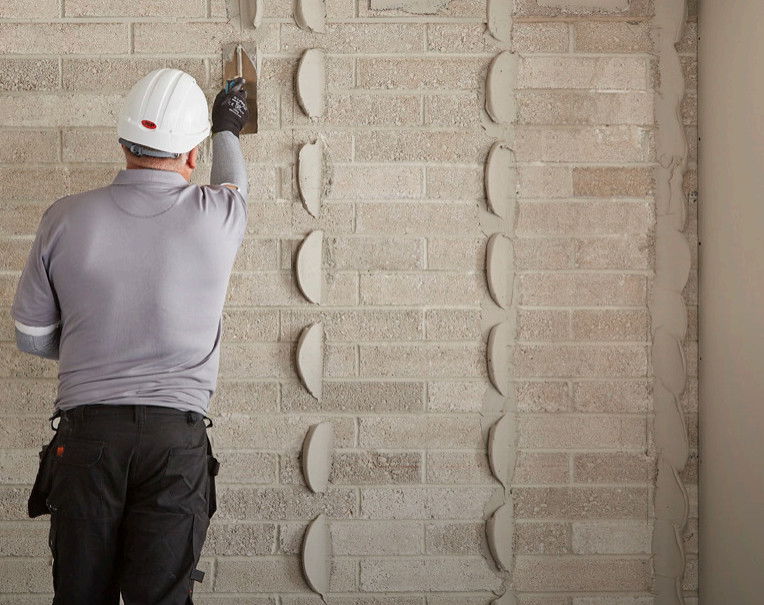What is Drylining?

Drylining is a construction technique that involves attaching plasterboard a wall using a plasterboard adhesive or a metal timber frame..
Drylining creates a smooth, finished surface on which you can 'skim' (apply coats of finishing plaster) or 'Tape and Joint' (apply plaster only to the joints of plasterboards).
The adhesive can be gypsum powder mixed into a stiff plaster or a polyurethane adhesive foam.
The plasterboard adhesive is applied to the wall in small patches before the plasterboard is applied to it, which is why drylining is often referred to as 'Dot and Dab'.
Unlike traditional solid plastering methods, drylining can be faster, more efficient approach. It is commonly used in both residential and commercial construction projects.
Drylining offers numerous advantages over traditional techniques. Firstly, it reduces construction time significantly, allowing for quicker project completion. Additionally, it provides excellent thermal and sound insulation properties, enhancing the overall comfort and energy efficiency of a building. Moreover, drylining allows for easy installation of electrical wiring and plumbing systems, eliminating the need for costly and time-consuming modifications.
Benefits of Drylining
Drylining offers a range of benefits that make it an attractive choice for construction projects.
1. Time and Cost Efficiency
Using drylining can save significant time and money in construction projects. The quick installation of plasterboards, combined with simplified modifications and repairs, can result in reduced labor costs and faster project completion.
2. Versatility
Drylining can be applied to various surfaces, including brick and blockwork.
3. Enhanced Insulation
One of the main advantages of drylining is its thermal and sound insulation properties. Plasterboards, when combined with insulation materials, provide excellent heat and sound insulation, creating a more comfortable living or working environment. This insulation also contributes to energy efficiency, reducing heating and cooling costs.
Drylining can be used for insulated plasterboards, where the insulation is directly bonded to the back of the plasterboard.
4. Easy Installation of Services
Unlike traditional construction methods, drylining allows for easy installation of electrical wiring, plumbing, and other services. The hollow space behind the plasterboards provides a convenient pathway for the installation of utilities without the need for extensive modification or destructive work.
In Conclusion
Drylining is a versatile and efficient construction technique that offers numerous benefits across various applications. Its time and cost-efficiency, enhanced insulation properties, and easy installation of services make it an appealing choice residential new build and renovation projects.
Contact Us
We are a professional and reliable family run plastering business serving Radstock, Midsomer Norton, Bath, Bristol, Shepton Mallet, Frome, and Wells. With years of experience, we take pride in offering top-quality workmanship and ensuring a clean and tidy finish on every project. Contact us today for your drylining needs.